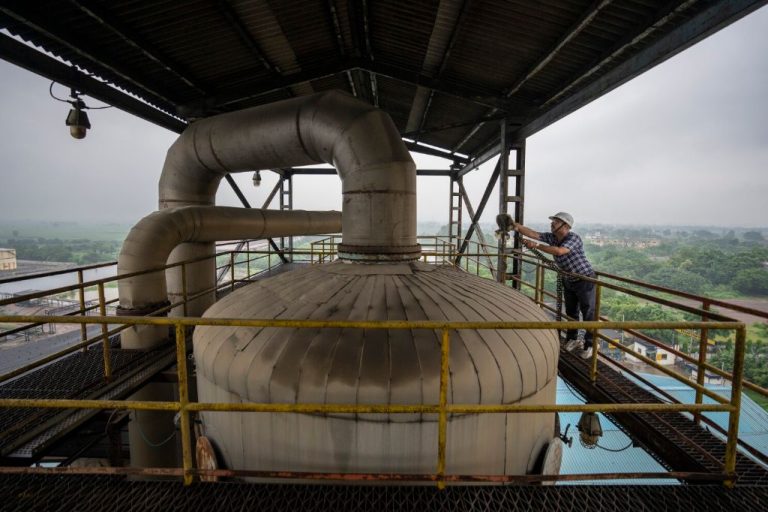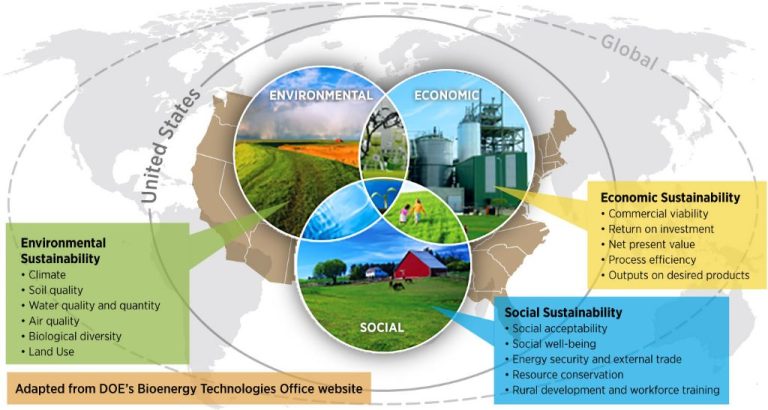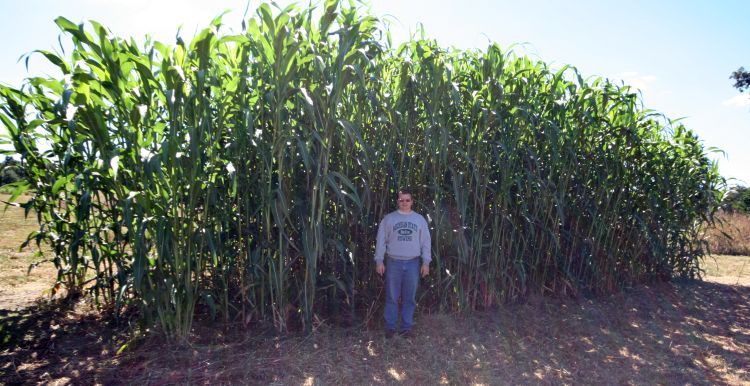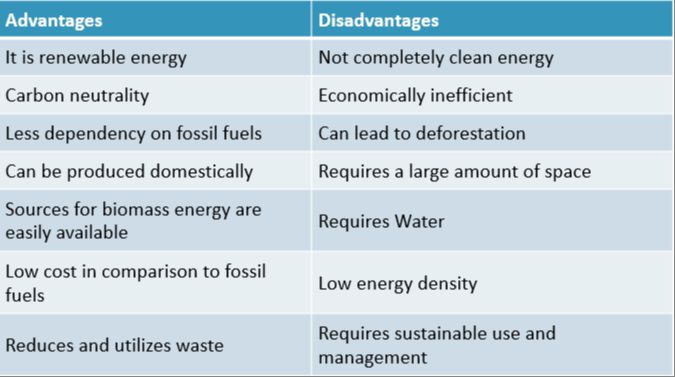What Is The Biomass Potential In Asean?
Biomass refers to organic matter that comes from plants and animals, and it can be used as a renewable source of energy. It includes resources like agricultural residues, wood waste from forestry, organic waste from municipalities, and animal manure [1]. The Association of Southeast Asian Nations (ASEAN) is comprised of 10 countries in Southeast Asia with a total population of over 650 million people. This region has significant potential for biomass energy due to its large agricultural and forestry sectors. Studies estimate that ASEAN has over 500 million tons of available biomass resources annually from agriculture and forestry [2][3]. This biomass has the potential to generate significant renewable energy and provide environmental benefits across ASEAN countries.
Types of Biomass
There are several major types of biomass sources available in Southeast Asia:
Agricultural Waste
Agricultural biomass includes crop residues like rice husks, rice straw, sugarcane bagasse, and coconut shells. Southeast Asia produces large amounts of rice and sugarcane, resulting in abundant agricultural waste that can be used for energy generation. For example, Thailand alone generates over 5 million tons of rice husks annually (https://wires.onlinelibrary.wiley.com/doi/full/10.1002/wene.499).
Forest Residues
Forest biomass includes wood waste, sawdust, tree branches, bark, and leaves. Indonesia and Malaysia have significant forestry resources, with logging and wood processing activities generating biomass residues. It’s estimated Malaysia produces over 3 million tons of wood waste each year (https://asean.org/wp-content/uploads/2021/12/FAFD-53.-Biomass-Energy-Strategy-ASEAN-2020-2030-Final-Draft-210820.pdf).
Animal Manure
Animal manure from livestock operations is another source of biomass. Pig and chicken farms are common across Southeast Asia, producing manure that can be converted into biogas. Vietnam, for example, has the potential to generate 8 billion kWh annually from pig and chicken manure (https://asean.org/wp-content/uploads/2021/12/FAFD-53.-Biomass-Energy-Strategy-ASEAN-2020-2030-Final-Draft-210820.pdf).
Municipal Solid Waste
Organic municipal solid waste like food scraps and yard waste can also be a biomass resource. Waste generation is increasing in urban areas of Southeast Asia. Singapore produces over 1,300 tons of solid waste daily, which has biomass energy potential through technologies like incineration (https://accept.aseanenergy.org/arnecc-research-data/biomass-energy-an-overview-of-biomass-sources-energy-potential-and-management-in-southeast-asian-countries/).
Agricultural Biomass
ASEAN nations have abundant agricultural biomass resources due to widespread rice, sugarcane, and palm oil cultivation. According to the ASEAN Centre for Energy, rice is a major staple crop accounting for over 90 million tons produced annually in ASEAN. Rice straw and husks offer significant biomass potential, with over 60 million tons of rice straw residues produced each year (ASEAN Centre for Energy, 2021).
Sugarcane bagasse is another agricultural residue with high energy potential, with sugar mills in Thailand, Philippines and Indonesia producing over 30 million tons of bagasse annually. Oil palm biomass like trunks, fronds and empty fruit bunches, also has significant potential given expanding palm oil production in Malaysia, Indonesia and Thailand (ASEAN Centre for Energy, 2021).
Overall, ASEAN produces over 100 million tons of agricultural residues each year that can provide feedstock for bioenergy production (ASEAN Centre for Energy, 2021). Converting these agricultural wastes to energy can provide environmental and economic benefits.
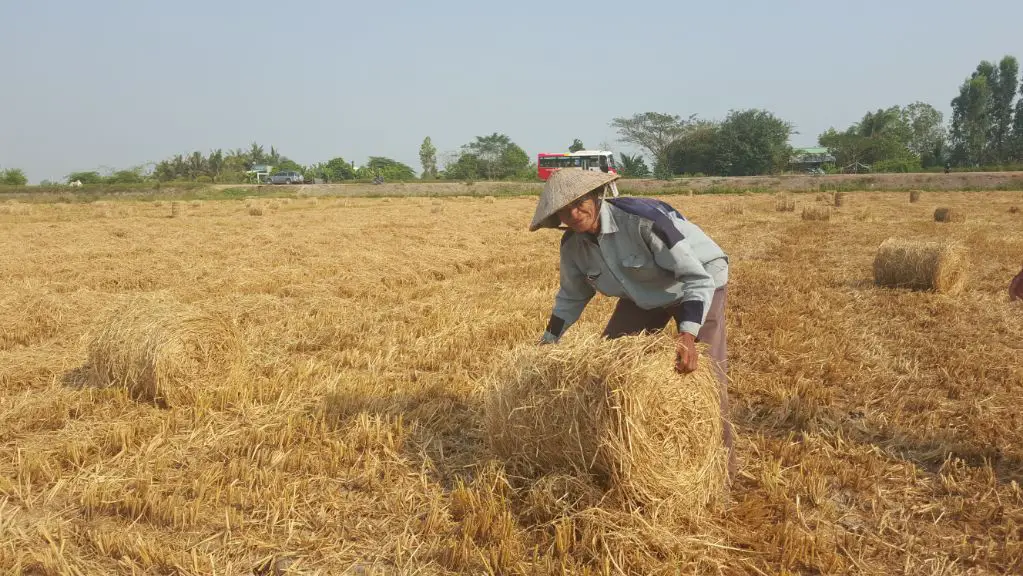
Forestry Biomass
Southeast Asia contains some of the largest contiguous forests in the world, including major forests in Indonesia, Malaysia, and Thailand. However, deforestation rates are high, with many ASEAN countries losing significant forest cover in recent decades. According to ASEAN Centre for Energy, the annual allowable cut of wood in ASEAN forests is about 270 million cubic meters, which could provide about 5 exajoules of biomass energy.1 Forestry residues from logging and wood processing operations represent a significant biomass resource, estimated at 45-50 million tonnes per year dry matter across ASEAN.2 However, sustainable forest management practices are needed to utilize forestry biomass while avoiding further deforestation and protecting biodiversity.
Animal Manure
Livestock production is a major source of biomass in the ASEAN region. According to the ASEAN Biomass Energy Strategy 2020-2030, Vietnam has a large livestock population, with 28 million heads of buffalo/cattle, 27 million pigs, and 323 million poultry as of 2015 (ASEAN, 2021). Based on livestock population estimates, Vietnam could potentially produce 61 million tonnes of raw animal manure per year, contributing significantly to its biomass potential.
Thailand also has a sizeable livestock industry, with estimated manure production of 44 million tonnes per year as of 2016 (Abdeshahian et al., 2016). Studies show biogas production yields of 20-25 m3/tonne from raw buffalo manure, and 30-35 m3/tonne from raw pig and cattle manure in Vietnam (Cu et al., 2015). With proper management, the manure from ASEAN’s livestock farms presents significant potential for biogas energy.
Municipal Solid Waste
Municipal solid waste (MSW) generation rates have been increasing in ASEAN countries due to economic growth, urbanization, and changes in consumption patterns. According to a report by ASEAN, the average municipal solid waste generation rate in ASEAN was approximately 0.74 kg/capita/day in 2019, up from 0.56 kg/capita/day in 2010. The composition of MSW in ASEAN consists primarily of organic waste such as food scraps (44%), followed by paper (17%), and plastics (14%).
Total Biomass Potential
The total biomass potential in ASEAN comes from various sources including agricultural residues, forestry residues, animal manure, and municipal solid waste. According to an ASEAN report, the total biomass energy potential is estimated at 2.901 million GJ. Agricultural biomass accounts for the largest share at 1.2 million GJ, followed by forestry biomass at 1.1 million GJ. Animal manure accounts for 500,000 GJ and municipal solid waste accounts for 100,000 GJ. An ASEAN research report estimates the total annual biomass potential from agriculture and forestry in ASEAN at over 500 million tons.
Energy Generation Potential
According to ASEAN Biomass Energy Strategy report, biomass has significant potential for energy generation in the region. There are several conversion technologies that can turn raw biomass into useful energy products:
- Direct combustion – Biomass is burned directly to produce heat and electricity. This is done via boilers, steam turbines, gasifiers, and cogeneration plants.
- Anaerobic digestion – Organic matter like manure and municipal waste are broken down by bacteria to produce biogas. The biogas can be used for heating, electricity generation, and transportation fuel.
- Pyrolysis – Heating biomass without oxygen produces bio-oil, syngas, and biochar. The products have energy applications.
- Fermentation – Sugars and starches from biomass feedstocks can be fermented to produce ethanol, a liquid biofuel.
The total primary energy generation potential from biomass in ASEAN is estimated to be about 740 million tonnes of oil equivalent per year by 2025. This could supply up to 24% of the region’s energy needs. With further development of biomass resources and conversion technologies, the potential is even higher.
Environmental Benefits
Biomass energy offers significant environmental benefits compared to fossil fuels, especially related to reducing greenhouse gas emissions. According to the ASEAN strategy on sustainable biomass energy, utilizing biomass for energy generation can avoid over 300 million tons of CO2 emissions annually in ASEAN. This represents nearly 10% of total energy sector emissions. Since biomass absorbs CO2 during plant growth, using biomass energy creates a closed carbon cycle with net zero emissions.
In addition to mitigating climate change impacts, increased use of biomass energy also reduces air pollution from suspended particulates, nitrogen oxides, sulfur dioxide and other contaminants compared to coal and oil. Burning biomass fuels more cleanly than fossil fuels decreases respiratory illnesses and environmental damage across ASEAN countries. Transitioning from traditional biomass use to modern bioenergy systems with improved combustion efficiency and emissions control delivers even greater benefits.
Conclusions
The total biomass potential in the ASEAN region is estimated to be around 186 million tonnes annually. This includes residues from agriculture, forestry, animal manure and municipal solid waste. Agricultural biomass, mainly rice husk and sugarcane bagasse, accounts for the majority of the potential at 127 million tonnes. Studies show that only a small fraction of this potential is currently utilized for energy generation.
Converting the untapped biomass potential into energy could generate around 50-60 GW of electricity annually. This would meet a significant portion of the rapidly growing energy demand in the region. Increased use of biomass would also reduce dependence on fossil fuels and provide environmental benefits through avoided greenhouse gas emissions.
Going forward, ASEAN nations need to develop policies that encourage investment in biomass power projects. Providing incentives and establishing biomass energy targets could help drive growth in this sector. Training programs are also needed to build local capacity and skills for biomass plant operations and feedstock supply chains. Realizing the full biomass potential will require mobilizing sustainable financing mechanisms and international partnerships between ASEAN and developed nations.

